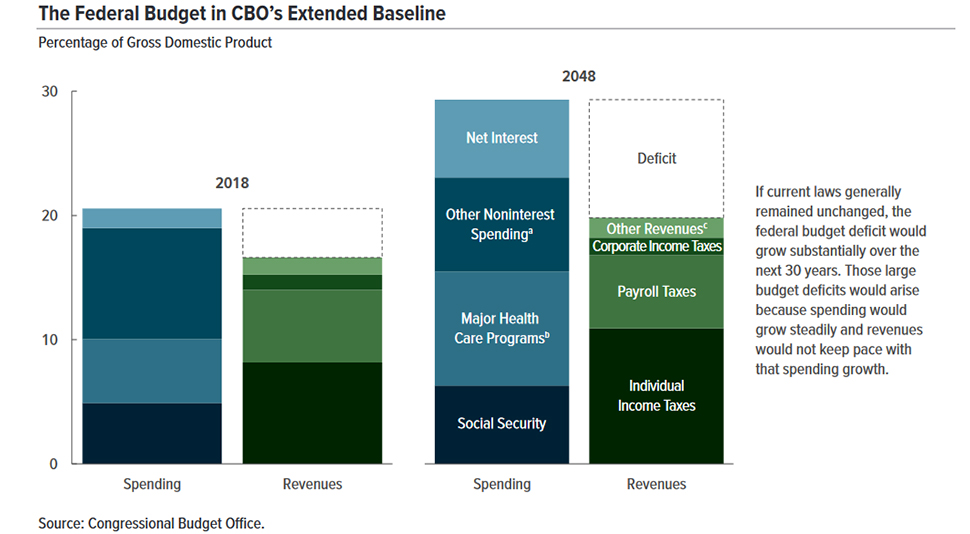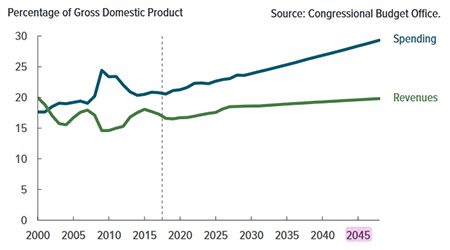US Debt: Bomb or Overblown?

SUMMARY
The latest report from the Congressional Budget Office (CBO) is enough to curdle the blood of any fiscal conservative.
According to the report, US federal debt held by the public relative to GDP currently stands at 78 percent (debt issued in Treasury securities). If current trends hold, that number will reach 100 percent of GDP by the end of the decade, and 152 percent of GDP by 2048. Broadly speaking, the expansion is being fueled by outlays for Social Security and Medicare and increasingly burdensome interest payments on preexisting debt.
The country’s darkening fiscal outlook is sure to resonate in future elections in the United States, but there’s a crucial international dimension here as well.
BACKGROUND
Spending growth will contribute to widening deficits over the next 30 years.

The CBO predicts that Social Security spending will grow from 4.9 percent of GDP in 2018 to 6.3 percent in 2048; health care programs (including Medicare and Medicaid among others) will rise from 5.2 percent to 8.7 percent, mostly on the back of an aging population and high healthcare costs per person; and interest payments will balloon from 1.6 percent to 5.3 percent.
Annual deficits are projected to rise from 3.9 percent in 2018 to 8.4 percent in 2048.
Discretionary spending relative to GDP over the same period is expected to fall, if nothing because the budgetary math increasingly won’t allow for it. Discretionary spending was 6.3 percent of GDP in 2018; the CBO expects that number to fall to 5.5 percent by 2048.
Revenues are expected to remain flat for the next few years and then jump in 2026, when income tax cuts from this year’s tax act are set to expire. Revenues would then grow in-step with the economy, but they would still fail to keep pace with spending growth.
…click on the above link to read the rest of the article…